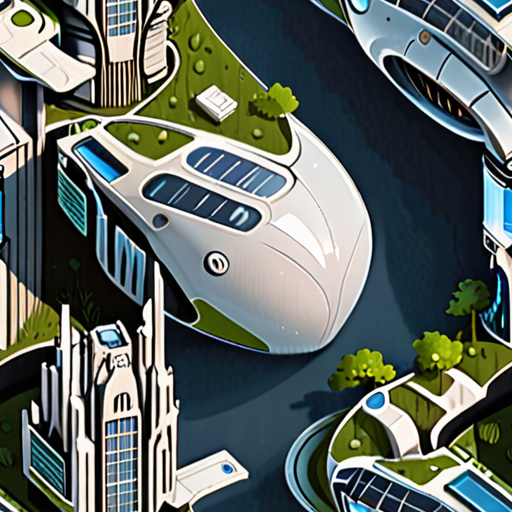In today’s fast-paced business landscape, companies are under increasing pressure to adopt sustainable practices that minimize their ecological footprint while maximizing productivity. One key strategy for achieving this balance is by leveraging resource-efficient technologies, which enable organizations to optimize their use of resources, reduce waste, and minimize energy consumption. By implementing these cutting-edge solutions, businesses can not only improve their bottom line but also contribute to a more environmentally conscious future. As we explore the world of resource-efficient technologies, we’ll delve into real-life applications, strategies for reducing waste, and innovative ways companies can integrate these solutions into their operations.

Example of Resource Efficient
At Pyrolysium, we believe that resource efficiency is crucial in reducing our environmental footprint.
- Swapping incandescent light bulbs with LED or CFL bulbs reduces energy consumption by up to 80%
- Installing a low-flow showerhead can save up to 2.5 gallons of water per minute
- Insulating a building to use less heating and cooling energy can lead to significant cost savings and reduced greenhouse gas emissions
- Implementing recycling programs and composting food waste can divert millions of tons of waste from landfills annually
- Using public transportation, carpooling, or driving electric or hybrid vehicles can significantly reduce air pollution and carbon emissions
We strive to educate and inspire others about sustainable living and eco-friendly technologies through our informative blog posts and community engagement.
By adopting these simple yet effective measures, we can collectively make a positive impact on the environment and promote a culture of resource efficiency.
As a leader in the field of pyrolysis, we aim to transform waste materials into valuable resources like biochar, reducing waste disposal costs and promoting a closed-loop economy.
Our mission is to empower individuals and communities to take control of their environmental impact and adopt greener practices that benefit both people and the planet.
Join us in our quest for a more sustainable future and discover the many benefits of resource efficiency for yourself.
Resource Efficient Practices
At Pyrolysium, we’re committed to helping individuals and communities reduce their environmental impact through sustainable living and eco-friendly technologies.
-
Reduce Waste
We believe that reducing waste is essential to achieving a more resilient economy. By minimizing our consumption of single-use plastics, paper products, and other non-essential items, we can significantly decrease the amount of waste sent to landfills and incinerators.
Some effective ways to reduce waste include:
- Implementing recycling programs in our homes, workplaces, and communities
- Choosing products with minimal packaging or those made from recycled materials
- Composting food waste and yard trimmings to create nutrient-rich soil
-
Reuse Materials
Reusing materials is another crucial aspect of resource efficiency. By finding creative ways to repurpose old or discarded items, we can conserve natural resources, reduce waste, and save money.
Some ideas for reusing materials include:
- Donating gently used clothing, furniture, and household items to local charities or thrift stores
- Upcycling old items into new ones, such as turning an old t-shirt into a reusable bag
- Sharing tools, equipment, or other resources with friends, family, or neighbors
-
Recycle
Recycling is a vital component of resource efficiency, allowing us to convert waste materials into new products and conserve natural resources.
Some effective ways to recycle include:
- Participating in curbside recycling programs or drop-off centers for paper, plastic, glass, and metal
- Buying products made from recycled materials, such as recycled paper or aluminum cans
- Creating a home composting program to turn food scraps and yard trimmings into nutrient-rich soil
Best Practices for Resource Efficiency
To maximize the effectiveness of resource-efficient practices, consider the following best practices:
- Set clear goals and track progress towards reducing waste, reusing materials, and recycling
- Involve the entire community in resource-efficient efforts, including employees, customers, and stakeholders
- Continuously educate yourself and others on the importance of resource efficiency and its benefits
- Stay up-to-date with the latest trends and innovations in resource efficiency, such as advanced recycling technologies or sustainable materials
Conclusion

What is Resource Efficient Production?
At Pyrolysium, we’re dedicated to educating and inspiring people about sustainable living and eco-friendly technologies, with a focus on pyrolysis—a process that transforms waste materials into valuable resources like biochar.
- We believe that resource efficient production is crucial for reducing our environmental footprint and promoting sustainable development.
- Resource efficient and cleaner production, also known as RECP, refers to the continuous application of preventive environmental strategies towards processes, products, and services to increase efficiency and productivity.
Key Principles of Resource Efficient Production:
- Sustainable Materials Management: We strive to minimize waste generation and promote the reuse and recycling of materials.
- Energy Efficiency: Our goal is to optimize energy consumption and reduce greenhouse gas emissions through the adoption of renewable energy sources and energy-efficient technologies.
- Water Conservation: We aim to minimize water usage and promote water-saving practices throughout our operations.
- Supply Chain Optimization: We work closely with our suppliers to ensure that they adhere to our sustainability standards and practices.
Benefits of Resource Efficient Production:
- Reduced environmental impacts and pollution
- Improved product quality and reliability
- Increased operational efficiency and productivity
- Cost savings through reduced material and energy consumption
- Enhanced brand reputation and customer loyalty
Best Practices for Implementing Resource Efficient Production:
- Conduct regular audits and assessments to identify areas for improvement
- Develop and implement sustainable procurement policies
- Invest in energy-efficient equipment and technologies
- Train employees on sustainable practices and procedures
- Monitor and report progress regularly
Conclusion:
By adopting resource efficient production practices, businesses can significantly reduce their environmental footprint, improve their bottom line, and enhance their reputation among customers and stakeholders.

Implementing Resource-Efficient Technologies to Reduce Waste and Minimize Environmental Footprint
We believe that embracing resource-efficient technologies is crucial for businesses seeking to reduce waste and minimize their environmental footprint.
-
Assess Current Operations
Start by evaluating your company’s current processes and identify areas where resource efficiency can be improved.
-
Invest in Renewable Energy Sources
Transition to renewable energy sources, such as solar or wind power, to reduce reliance on fossil fuels and lower carbon emissions.
-
Implement Energy-Efficient Equipment
Replace traditional equipment with energy-efficient alternatives, such as LED lighting or high-efficiency motors, to minimize energy consumption.
-
Reduce Water Usage
Install low-flow fixtures and implement water-saving measures to conserve this precious resource.
-
Implement Recycling Programs
Develop recycling programs for paper, plastic, glass, and metal to divert waste from landfills and conserve natural resources.
-
Partner with Suppliers
Collaborate with suppliers to source materials sustainably and reduce packaging waste.
-
Employee Education and Engagement
Train employees on sustainable practices and encourage participation in environmental initiatives to foster a culture of sustainability.
-
Monitor Progress and Adjust
Regularly track progress and adjust strategies as needed to ensure continuous improvement and maximize resource efficiency.
By implementing these resource-efficient technologies and strategies, businesses can significantly reduce waste, minimize their environmental footprint, and contribute to a more sustainable future.
Additional Resources:
- U.S. Environmental Protection Agency – Sustainability
- ISO 14001 – Environmental Management System
- GreenBiz – Sustainable Business News and Insights
Unlock Sustainable Growth with Resource-Efficient Technologies
We believe that embracing resource-efficient technologies is crucial for achieving sustainable growth while minimizing our ecological impact.
- Embracing Circular Economy Principles
Circular economy principles encourage us to design out waste and pollution, promote the continuous use of resources, and foster regenerative systems.
- Implement closed-loop production processes that reuse and recycle materials whenever possible.
- Invest in renewable energy sources and reduce dependence on fossil fuels.
- Develop products and services that are designed for recyclability, reusability, and biodegradability.
Advanced technologies play a vital role in optimizing resource efficiency and reducing waste.
- Invest in smart grids and energy storage systems to optimize energy distribution and consumption.
- Implement advanced water treatment technologies to minimize wastewater generation.
- Utilize artificial intelligence and machine learning algorithms to optimize resource allocation and reduce waste.
Collaboration with stakeholders is essential for driving sustainable growth and minimizing ecological impact.
- Promote partnerships between businesses, governments, and civil society organizations to share knowledge and best practices.
- Encourage collaboration among industries to develop common standards and guidelines for sustainable practices.
- Foster open communication and transparency to ensure accountability and trust among stakeholders.
Regular monitoring and assessment of progress and performance are critical for ensuring the effectiveness of resource-efficient technologies.
- Establish clear metrics and benchmarks for measuring resource efficiency and waste reduction.
- Conduct regular audits and assessments to identify areas for improvement.
- Share progress and lessons learned with stakeholders to promote transparency and accountability.
Engaging employees and local communities is essential for driving cultural transformation and promoting sustainable practices.
- Develop training programs and workshops to educate employees on resource-efficient technologies and sustainable practices.
- Engage with local communities through outreach programs and public events to promote awareness and adoption of sustainable practices.
- Foster a culture of innovation and experimentation to encourage employees to develop new ideas and solutions for sustainable growth.
We believe that by embracing these strategies, we can unlock sustainable growth while minimizing our ecological impact and contributing to a better future for generations to come.

Maximizing Productivity While Reducing Carbon Footprint
We’re committed to helping businesses like yours revolutionize operations by leveraging resource-efficient technologies.
- Implement Energy-Efficient Lighting: Switch to LED lighting, which consumes significantly less energy and lasts longer than traditional incandescent bulbs.
- Optimize HVAC Systems: Regular maintenance and upgrading to energy-efficient models can reduce energy consumption and lower costs.
- Reduce Water Waste: Implement low-flow fixtures and greywater reuse systems to minimize water usage.
- Implement Recycling Programs: Develop comprehensive recycling programs for paper, plastic, glass, and metal to reduce waste sent to landfills.
- Invest in Renewable Energy: Consider solar, wind, or geothermal energy to power facilities and reduce reliance on fossil fuels.
- Conduct Energy Audits: Hire professionals to identify areas of inefficiency and provide recommendations for improvement.
- Encourage Sustainable Practices: Educate employees on the importance of sustainability and encourage them to adopt environmentally friendly habits.
- Develop a Green Supply Chain: Partner with suppliers who share your commitment to sustainability and source materials responsibly.
- Monitor and Report Progress: Track energy consumption, waste reduction, and other key metrics to measure progress and identify areas for improvement.
Competitors in the Industry
We recognize the importance of acknowledging competitors in the industry. Some notable companies include:
- GreenBiz
- Sustainability
- Ceres
Conclusion
By incorporating these innovative strategies, businesses can significantly reduce their carbon footprint while maximizing productivity. At Pyrolysium, we’re dedicated to helping organizations like yours navigate the transition to a more sustainable future.

0 Comments